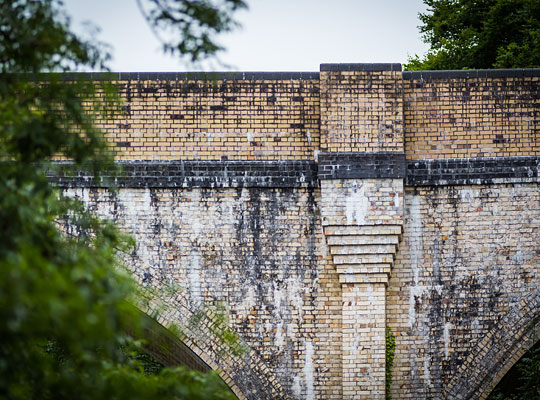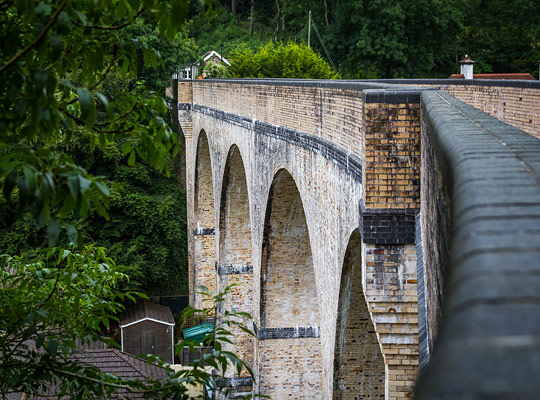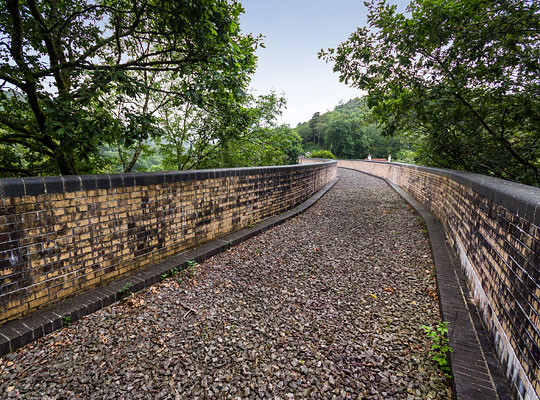Chelfham Viaduct
Chelfham Viaduct


















In September 1896, Lady Newnes, wife of Sir George Newnes, cut the first sod of the Lynton & Barnstaple Railway (L&BR), of which Sir George chaired the Board of Directors. He had been a vocal advocate for the now-famous Lynton & Lynmouth funicular cliff railway six years earlier.
The L&BR, which meandered through delightful countryside for 19½ miles, was set out by Frank W Chanter of Barnstaple who was given responsibility for its engineering. The two-foot gauge track reached a summit of nearly 1,000 feet.
From the outset, the intention was to complete the line before the 1898 summer influx of tourists. Prior to its opening, communication between the towns at either end involved two daily coach services and a charabanc – run by the Jones Brothers – carrying 9,000 passengers per week at peak times.
For an agreed sum of £42,100, James Nuttall of Manchester was appointed as the railway’s main construction contractor, with Sir James Szlumper acting as the consulting engineer. Two of the stations were built by the aforementioned Jones Brothers whilst Mr J Gibson of Exeter erected the joint L&BR/London & South Western Railway station in Barnstaple at a cost of about £6,000. The line itself had a price tag of around £3,000 per mile.
Reputed to be built from quarter-of-a-million bricks, the largest structure along the route – indeed on any of Britain’s narrow-gauge lines – was the impressive Chelfham Viaduct which crossed two mill streams and the road to Stoke Rivers. Officially Bridge No.22, it comprised eight 42-foot spans, reaching a height of 70 feet and extending for 130 yards over the valley. Whilst its northern half is straight, the structure’s southern end incorporates a curve to the west of around 100 yards in radius. The deck rises to the north on a 1:50 gradient.
The lower parts of the piers were built in stone, but a shortage of suitable materials prompted a change to yellow Marland brick for the remainder of the structure. These were sourced from a brickworks near Torrington and are seen widely across the region. Behind the brickwork is a concrete fill made with beach sand; the salts leach through the bricks, resulting in surface mottling.
For the safety of platelayers, refuges were corbelled out above three of the piers, two on the west side and one on the east. Below these were shallow pilasters. As no check rail was provided, brick kerbs were built against the parapets to prevent lateral track movement as trains encountered the curve. Below the parapets was an oversail of six brick courses. Fixings for telegraph wires were secured to the copings.
Chelfham Viaduct was completed in February 1897 at an estimated cost of £6,500. Very few accidents were recorded, but labourer John Edwards needed treatment at North Devon Infirmary after falling several feet and injuring his thigh. Blessed by fine weather, festivities for the line’s formal opening took place on 11th May 1898, the culmination of a 20-year struggle by the line’s promoters.
The L&BR’s peak period came between 1902 and1913 when it carried almost 97,000 passengers a year. Yet the considerable endeavour invested in the railway was not enough to save it; as traffic dwindled, the line succumbed to closure by Southern Railways on 29th September 1935. Most of the trackbed and buildings were sold at auction in 1938. Although Chelfham Viaduct was retained, its parapets were taken down to about one foot above ballast level. In 1943, it featured in a film, The Flemish Farm, representing the Franco-Belgian border.
The structure was granted a Grade II listing on 25th February 1965. In 2000, in partnership with the Railway Heritage Trust and the Lynton & Barnstaple Railway Trust, British Railways Board (Residuary) completed a programme of remedial works. These included the installation of a rainwater drainage system and waterproof membrane across the deck, restoration of the parapets and trackbed reballasting.
A section of the Lynton & Barnstaple Railway at Woody Bay was reinstated and opened as a tourist attraction on 11th May 2003. Plans are being actively progressed to extend the line and the ultimate ambition is to relay its full length, crossing Chelfham Viaduct.
Click here to visit the Lynton and Barnstaple Railway website.







